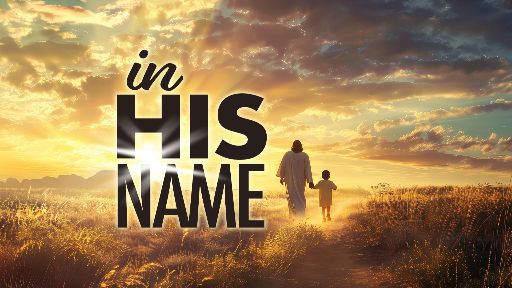-
Naming Rights
Contributed by Thomas Swope on Jan 7, 2019 (message contributor)
Summary: A study in the book of 2 Chronicles 3: 1 – 17
2 Chronicles 3: 1 – 17
Naming Rights
3 Now Solomon began to build the house of the LORD at Jerusalem on Mount Moriah, where the LORD had appeared to his father David, at the place that David had prepared on the threshing floor of Ornan the Jebusite. 2 And he began to build on the second day of the second month in the fourth year of his reign. 3 This is the foundation which Solomon laid for building the house of God: The length was sixty cubits (by cubits according to the former measure) and the width twenty cubits. 4 And the vestibule that was in front of the sanctuary was twenty cubits long across the width of the house, and the height was one hundred and twenty. He overlaid the inside with pure gold. 5 The larger room he paneled with cypress which he overlaid with fine gold, and he carved palm trees and chain work on it. 6 And he decorated the house with precious stones for beauty, and the gold was gold from Parvaim. 7 He also overlaid the house—the beams and doorposts, its walls and doors—with gold; and he carved cherubim on the walls. 8 And he made the Most Holy Place. Its length was according to the width of the house, twenty cubits, and its width twenty cubits. He overlaid it with six hundred talents of fine gold. 9 The weight of the nails was fifty shekels of gold; and he overlaid the upper area with gold. 10 In the Most Holy Place he made two cherubim, fashioned by carving, and overlaid them with gold. 11 The wings of the cherubim were twenty cubits in overall length: one wing of the one cherub was five cubits, touching the wall of the room, and the other wing was five cubits, touching the wing of the other cherub; 12 one wing of the other cherub was five cubits, touching the wall of the room, and the other wing also was five cubits, touching the wing of the other cherub. 13 The wings of these cherubim spanned twenty cubits overall. They stood on their feet, and they faced inward. 14 And he made the veil of blue, purple, crimson, and fine linen, and wove cherubim into it. 15 Also he made in front of the temple two pillars thirty-five cubits high, and the capital that was on the top of each of them was five cubits. 16 He made wreaths of chain work, as in the inner sanctuary, and put them on top of the pillars; and he made one hundred pomegranates and put them on the wreaths of chain work. 17 Then he set up the pillars before the temple, one on the right hand and the other on the left; he called the name of the one on the right hand Jachin, and the name of the one on the left Boaz.
A Jay-Z concert marked the long-awaited, much-ballyhooed opening of Barclays Center, the new home of the Brooklyn Nets. The basketball arena is named for the London-based international financial services company.
How does a company get naming rights to various stadiums?
Companies approach the team that plays there. Professional sports stadiums are usually owned by the municipalities in which they’re built, and one or more teams supposedly rent the stadium. The city (or county) and the team work out a contract to determine who gets what revenue from the stadium. The millionaires who own the sports team in most cases threaten that they will take their team and move to another city who offers a sweeter deal unless their current government leaders agree to let them get a new stadium with sweet additions. In these agreements, it’s almost always the case that the team gets all the revenue from stadium naming rights.
The amount a company pays for naming rights depends on the team owner and the city, the terms of the agreement, and the length of the agreement. Barclays agreed to pay $400 million for naming rights of the Nets arena lasting 20 years (a per-year record for most expensive stadium naming deal, tied with the New York Mets’ Citi Field). Generally, naming rights to new stadiums are worth more than naming rights to old stadiums, because fans are apt to continue calling re-named stadiums by their old names. (Candlestick Park, the home of the San Francisco 49ers, reverted to its original name after naming rights deals with first 3Com and then Monster expired.)
A few American sports stadiums bore corporate names in the early- to mid-20th century, including Chicago’s Wrigley Field and St. Louis’ Busch Stadium. But they were really named for team owners who also happened to own the companies (a chewing-gum company and a brewery, respectively). The corporate naming trend didn’t get going in earnest until the early 1990s, when teams realized that stadium names were an asset they could sell.

 Sermon Central
Sermon Central



